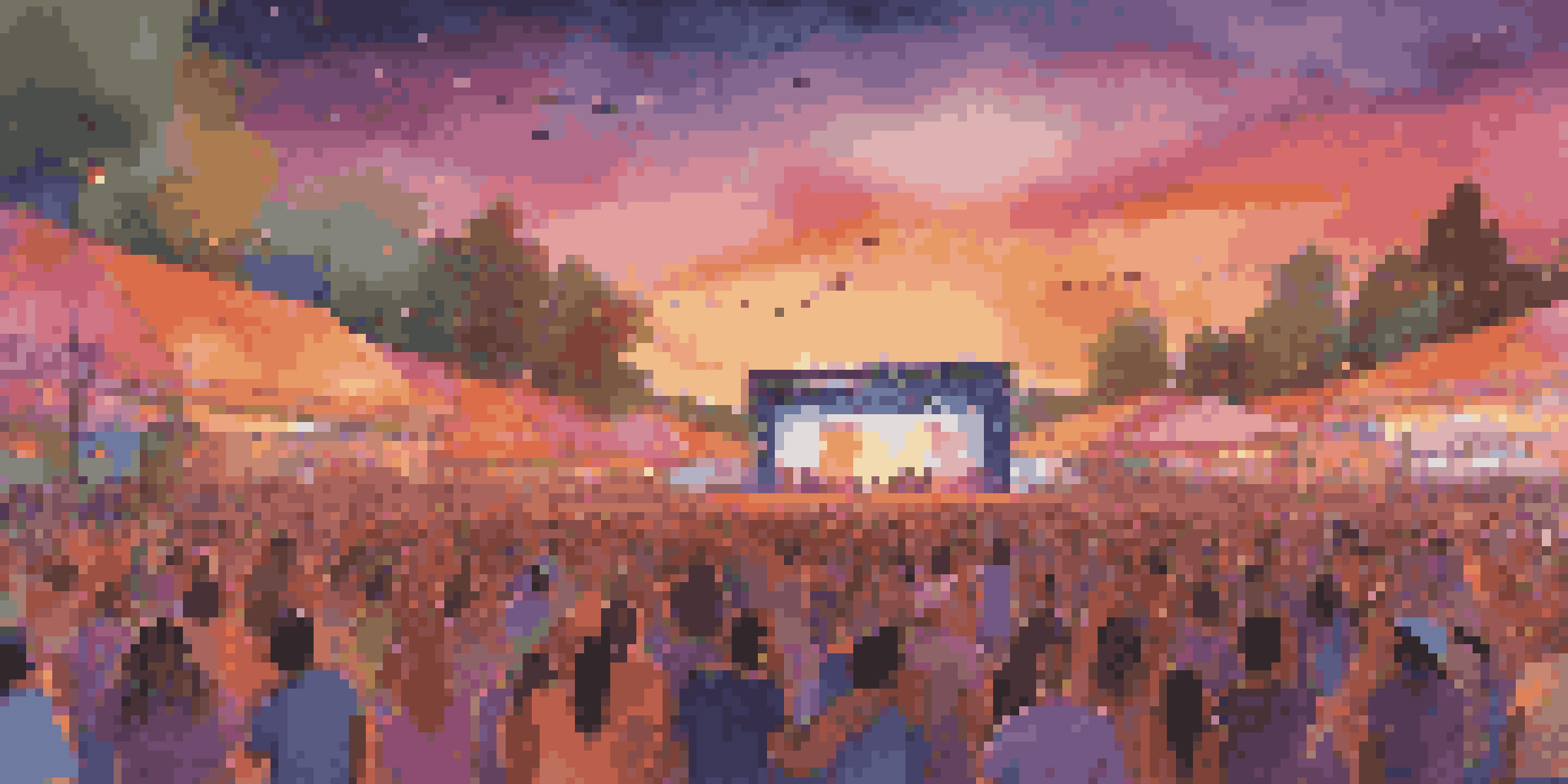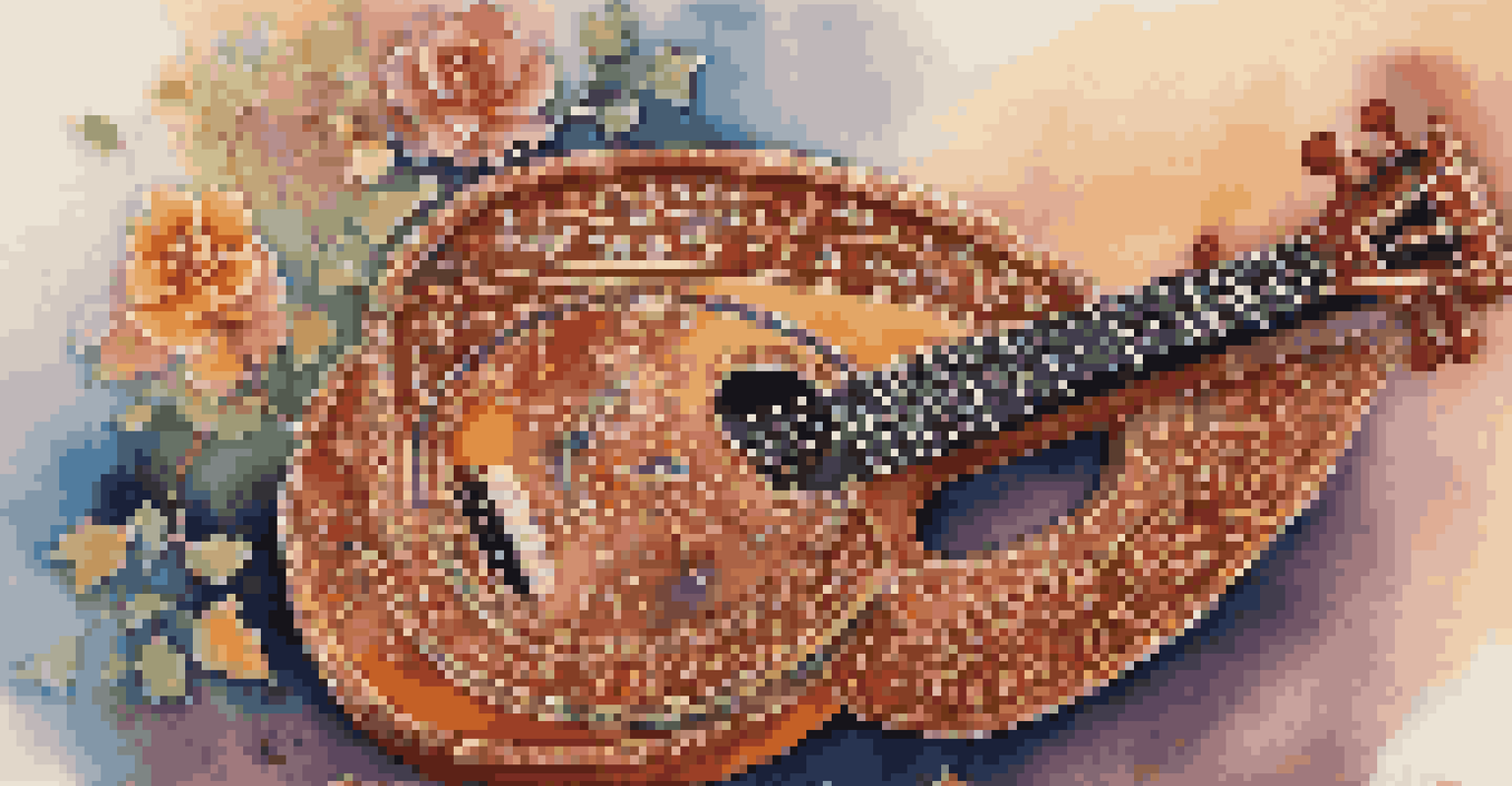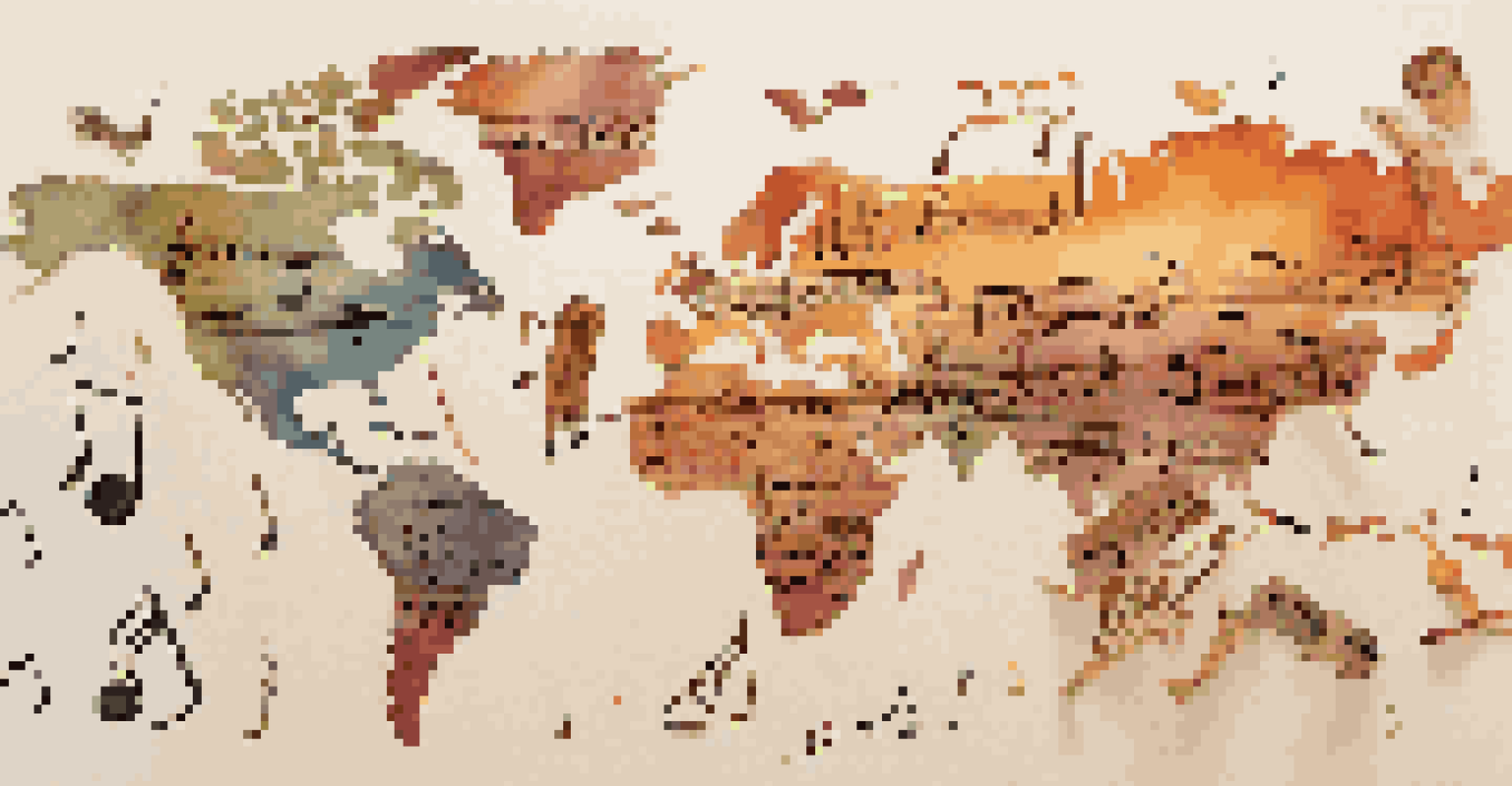Cultural Heritage and the Evolution of Musical Styles

Understanding Cultural Heritage in Music
Cultural heritage encompasses the traditions, customs, and artistic expressions passed down through generations. In music, this heritage can include folk songs, regional rhythms, and traditional instruments that reflect a community's identity. The melodies and lyrics often tell stories that represent historical events and cultural values, creating a rich tapestry that connects people to their roots.
Music is the shorthand of emotion.
For instance, consider the role of the blues in American music. Originating from African American communities in the Deep South, blues music embodies the struggles, hopes, and resilience of its creators. This genre not only showcases the unique cultural experiences of its time but also influenced countless other musical styles, illustrating how heritage informs evolution.
As societies evolve, so do their musical expressions. This ongoing dialogue between culture and music fosters innovation while preserving the essence of heritage. Understanding this relationship is key to appreciating the diverse musical landscape we enjoy today.
The Influence of Migration on Musical Evolution
Migration has historically played a pivotal role in shaping musical styles. When people move from one region to another, they bring their musical traditions with them, often merging them with local sounds. This blend creates new genres that reflect the cultural diversity of the community, showcasing the dynamic nature of music.

Take the example of reggae, which emerged in Jamaica and was heavily influenced by African rhythms, American jazz, and R&B. As Jamaican immigrants spread across the globe, reggae absorbed elements from various cultures, leading to the creation of sub-genres like dancehall and dub. This is a perfect illustration of how migration can serve as a catalyst for musical innovation.
Cultural Heritage Shapes Music
Musical styles reflect the traditions and stories of communities, showcasing their cultural heritage.
Moreover, the internet era has accelerated this process, allowing musicians to collaborate across borders like never before. This connectivity not only enhances the richness of musical styles but also fosters a sense of global community, reminding us that music is a universal language.
How Technology Shapes Musical Styles
Technology has always been a game changer in the music industry, influencing how music is created, produced, and consumed. From the invention of the phonograph to the rise of digital streaming platforms, each technological advancement has opened new avenues for artistic expression. This evolution has had profound effects on both the sound of music and its accessibility.
The beauty of music is that it connects people. It brings people together and makes them feel like they are part of something special.
For instance, electronic music owes its existence to advancements in synthesizers and computer software. Artists can now produce complex sounds that were unimaginable just a few decades ago. This shift has not only given birth to new genres, such as EDM and techno, but has also redefined traditional styles by incorporating electronic elements.
Furthermore, technology allows musicians to reach global audiences instantly. Social media platforms and streaming services have democratized music distribution, enabling independent artists to share their work without the need for major labels. This accessibility fosters a diverse musical ecosystem where various styles can thrive and evolve.
The Role of Festivals and Cultural Events in Music
Festivals and cultural events serve as vibrant showcases for musical styles, bringing together diverse artists and audiences. These gatherings not only celebrate heritage but also encourage the fusion of different musical influences. By providing a platform for collaboration, festivals can spark new genres and revive traditional forms.
For example, Coachella and Glastonbury are not just music festivals; they are cultural phenomena that highlight emerging trends and styles. Artists from various genres share the stage, leading to unexpected collaborations that can result in innovative sounds. Such events create a melting pot of musical ideas, demonstrating the power of community in shaping artistic expression.
Migration Fuels Musical Innovation
The movement of people leads to the blending of musical traditions, creating new genres and enriching cultural expressions.
Moreover, local festivals often emphasize regional music, helping to preserve and promote cultural heritage. These events play a crucial role in educating audiences about the significance of traditional styles, ensuring that they remain relevant in today’s fast-paced world.
Music as a Reflection of Societal Changes
Music often serves as a mirror reflecting the societal changes and cultural shifts of its time. From protest songs to anthems of hope, musical expressions can capture the essence of prevailing sentiments within a community. This relationship between music and society is crucial for understanding how musical styles evolve in response to external influences.
Consider the evolution of hip-hop, which began as a voice for marginalized communities in the Bronx. Over the years, it has transformed into a global phenomenon that addresses issues of race, inequality, and identity. This genre’s adaptability illustrates how music can respond to societal needs while also influencing cultural discourse.
As societal values change, so too do musical styles, often reflecting the struggles and triumphs of a generation. This interplay ensures that music remains relevant and continues to evolve, creating a dynamic landscape that resonates with listeners across different eras.
Cross-Cultural Collaborations and Musical Fusion
Cross-cultural collaborations have become increasingly common in today's music scene, leading to exciting fusions of styles. When artists from different cultural backgrounds come together, they create unique sounds that challenge traditional boundaries. This blending of influences not only enriches the music but also fosters understanding and appreciation among diverse audiences.
A great example of this is the genre known as world music, which often combines elements from various cultural traditions. Artists like Yo-Yo Ma and Anoushka Shankar have successfully merged classical Western music with Indian classical traditions, resulting in compositions that celebrate both heritages. Such collaborations remind us that music is a universal language capable of bridging gaps between cultures.
Technology Transforms Music Creation
Advancements in technology have revolutionized how music is produced and shared, fostering a diverse and accessible musical landscape.
Moreover, these musical fusions can lead to new genres that resonate with global audiences. As artists continue to explore diverse influences, the possibilities for innovation are endless, making music an ever-evolving art form that reflects our interconnected world.
The Future of Musical Styles and Cultural Heritage
As we look to the future, the interplay between cultural heritage and musical styles will continue to evolve. With globalization and technology rapidly changing how we create and consume music, artists will likely draw on a blend of influences to shape their sound. This evolution presents both challenges and opportunities for preserving cultural heritage while embracing innovation.
One challenge is ensuring that traditional styles are not lost in the face of modernization. Artists and communities must find ways to honor their heritage while also allowing for creative exploration. This balance will be essential for the survival of cultural identities as musical landscapes shift.

On the other hand, the fusion of styles presents an incredible opportunity for musical growth. As artists experiment with different influences, they can create new genres that resonate with diverse audiences. By celebrating cultural heritage while pushing artistic boundaries, the future of music promises to be a vibrant tapestry of sounds that reflect our shared human experience.